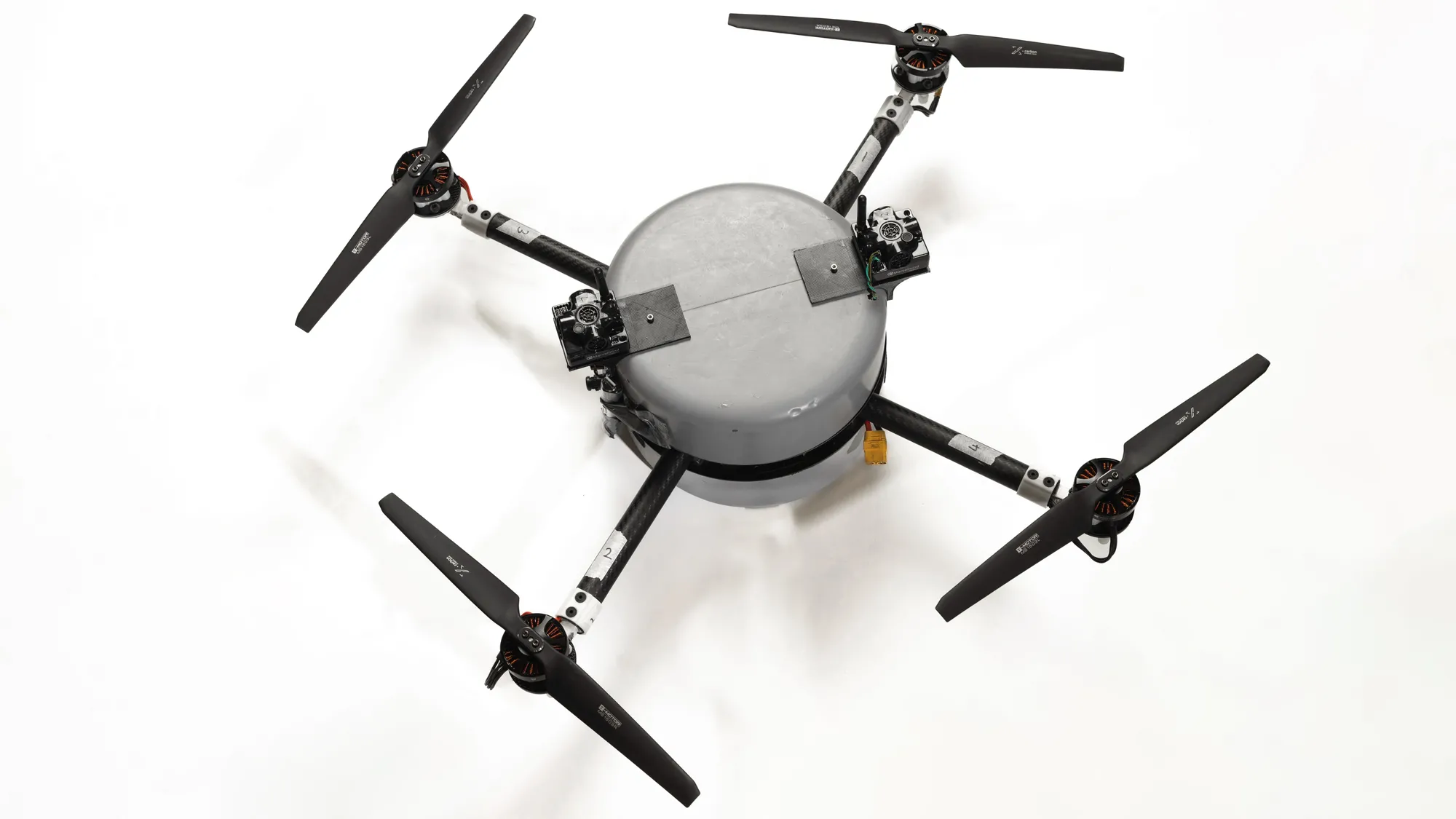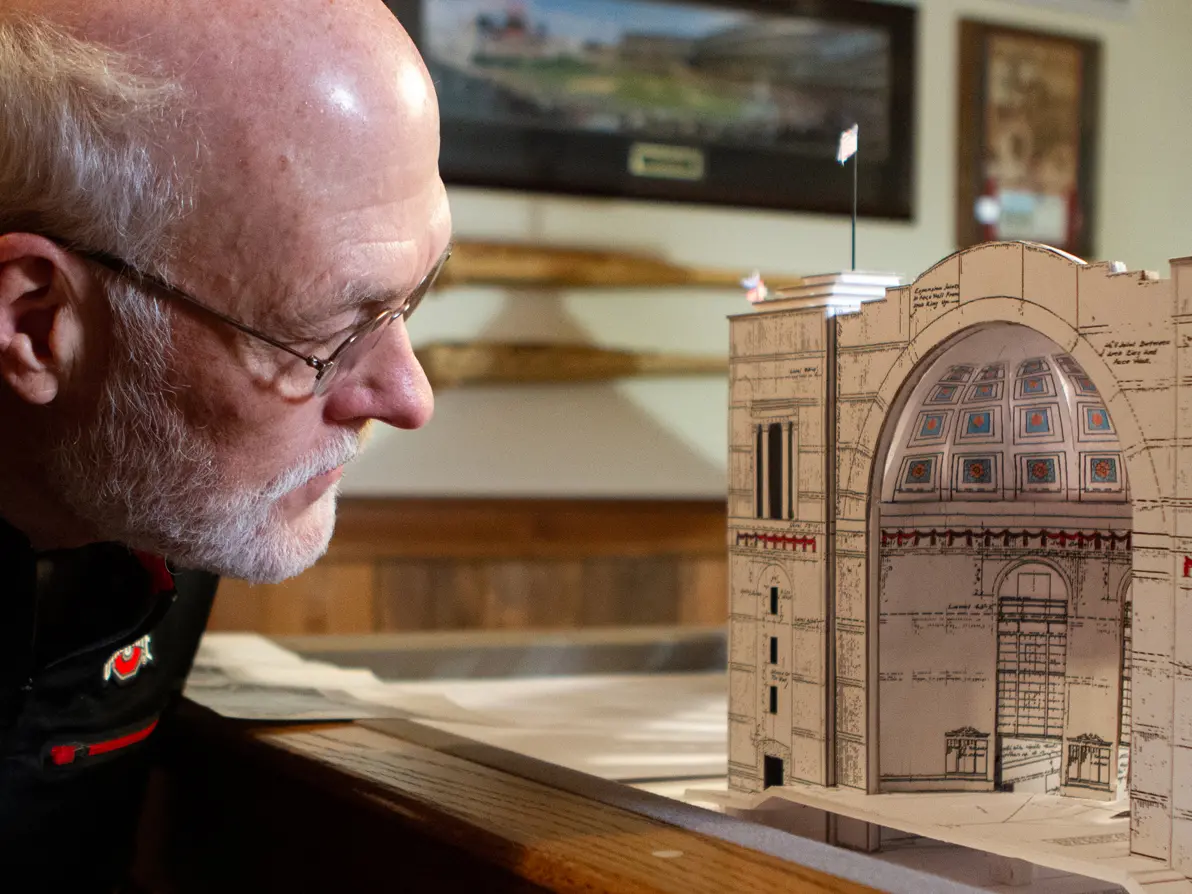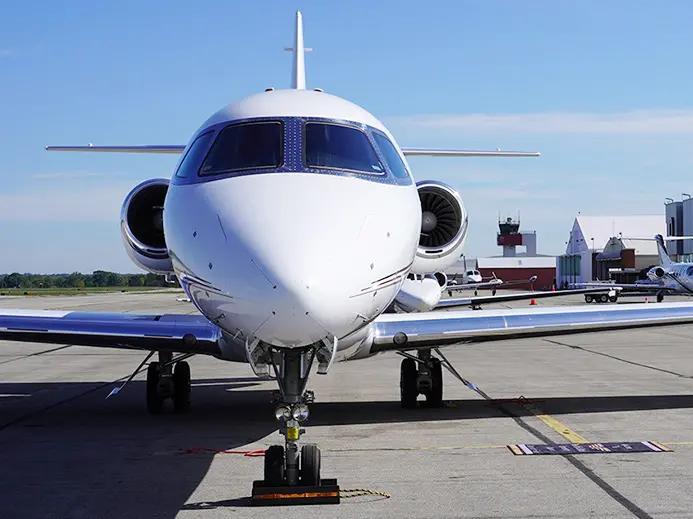Our expert sees 10 future jobs for drones
Assistant Professor Matt McCrink’s research lays the groundwork for everything from delivering packages to exploring planets.

A drone sprays pesticide over a field in a demonstration for Ohio State’s Farm Science Review in 2023. (Photo by Jodi Miller)
Will drones ever deliver our pizzas? Will they one day fly us around like air taxis? Or could they save lives? All are seeming very possible.
Drones, or uncrewed aerial vehicles (UAVs), have become valuable tools throughout our world, and companies and scientists are working to perfect drone capabilities so they can show up in new spaces every day. That means considering autonomous flight, airflow dynamics and a range of obstacles that could make, say, navigating a city hazardous, even dangerous, to people walking around.
Ohio State’s Matt McCrink ’15 PhD knows the difficulties better than anyone. The assistant professor of mechanical and aerospace engineering constructed Ohio State’s drone laboratory from scratch. He and his students are collaborating on studies to ensure safe airspaces and create the next generation of super-cool drones with limitless potential, such as flying around outer space.
Here are 10 big uses McCrink sees in drones’ future.
1. Agriculture advancements
On farms, drones can distribute fertilizer and pesticide, survey crops and scope out nutrient deficiencies. That’s happening here and far away: In fact, McCrink was involved in a crop study in Belize to improve production.

(Photo by Jodi Miller)
2. Product delivery
The promise of drones delivering everything from pizzas to shoes to (insert your favorite product here) has been around for years. Turns out, it’s super tricky, so companies such as Amazon are pouring money into figuring it out. Helping us get there are McCrink’s own projects, including perfecting autonomous flight and understanding airflow and rotor blade dynamics — technologies that someday could help drones transport people, too.
3. Mitigating wildfires
Drones are being created to address the dangerous tasks associated with fighting and containing wildfires, such as monitoring the spread and intensity. One day they could even help extinguish blazes. Ohio State Professor Mrinal Kumar is leading a team working to make this future a reality.

Dhuree Seth and McCrink run a pretest of a “detect and avoid” radar system that can help the drone avoid low-flying aircraft, such as medical helicopters. (Photo by Holly Henley ’09, ’10 MSW)
4. First response
Drones promise firefighters, emergency medical workers, even homeland security personnel the ability to quickly get to an emergency scene, assess the situation and relay information to help save lives. In fact, one of McCrink’s former students, Adithya Ramaswami ’23, has co-founded a company to tailor drones to the specific needs of first responders.
5. Mobile cellphone towers
If a natural disaster damages towers, drones can be sent up to temporarily act as airborne cellphone towers. In 2017, the people of Puerto Rico got cell service back via drones in the aftermath of Hurricane Maria.

(Photo by Holly Henley ’09, ’10 MSW)
6. Severe storm analysis
Scientists are working to fly drones (such as the one pictured) directly into tornadoes and other severe weather to more accurately understand them. This allows for better forecasts and safety measures that could save lives.

(Photo by Jodi Miller)
7. Surveying other planets
Since 2021, NASA’s Ingenuity helicopter drone has completed 61 flights on Mars, an impressive feat in the extremely thin atmosphere. McCrink is developing better blades (like those pictured) to support heavier payloads, potentially to partner with NASA to improve flight times and capabilities such as scanning the planet much more quickly than ground-based rovers can. Next stop? NASA hopes to send a drone to the Saturn moon Titan in 2027.
8. Aerial photography
Whether it’s media covering a protest or real estate agents documenting a property, commercial applications are already becoming common.
9. Wildlife conservation
Drone images can help people understand and conserve wildlife. The Imageomics Institute, based at Ohio State, uses drones to capture photos of wild animals. Then it employs artificial intelligence applications to gain precious insights into their populations, bolstering conservation efforts.
10. Topographic scanning
Drones in mountainous areas like Switzerland are being used to create more detailed 3D maps. One important application: better forecasting the danger zones of potential avalanches or rockslides.
Revolutionizing drone technology
In this episode of the Now at Ohio State podcast, Matt McCrink and two more experts discuss drone tech — where it’s been, where it’s going and the problems it can solve.



